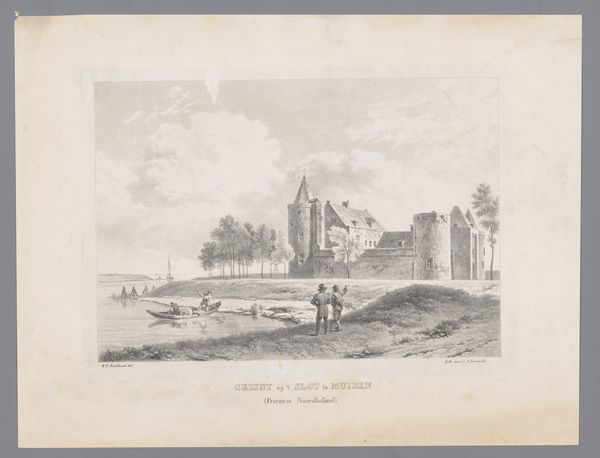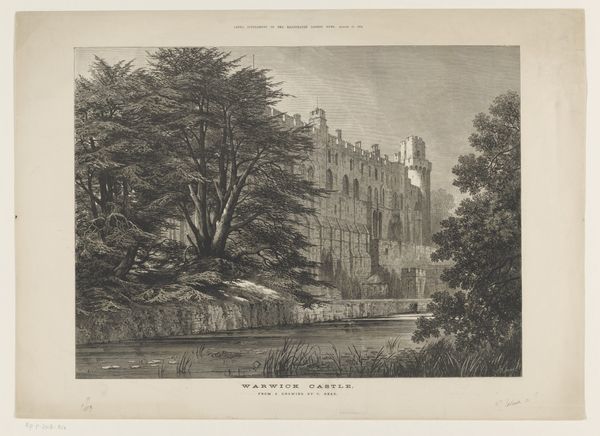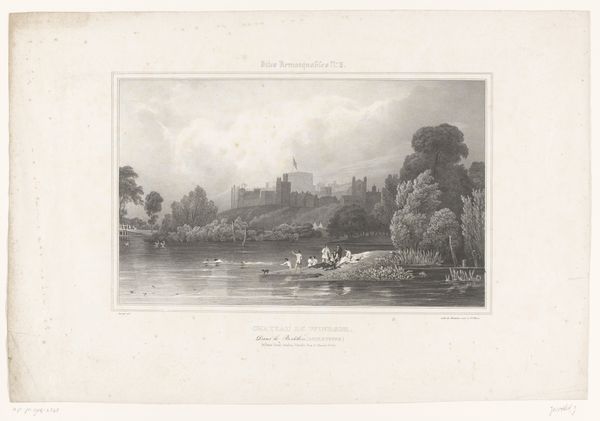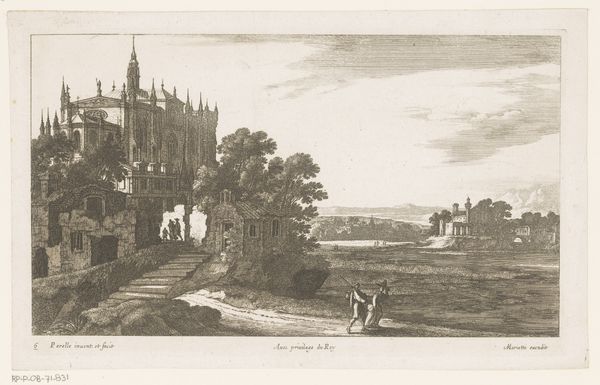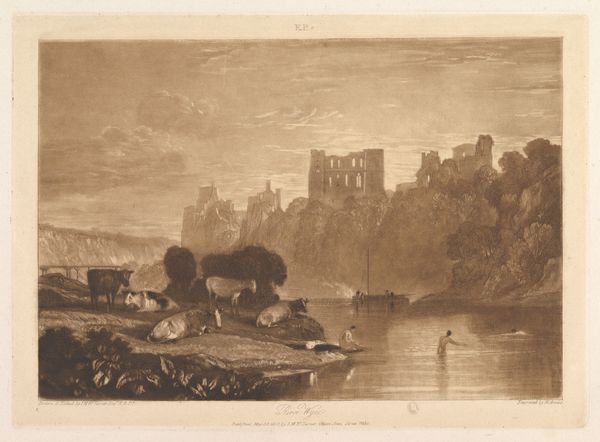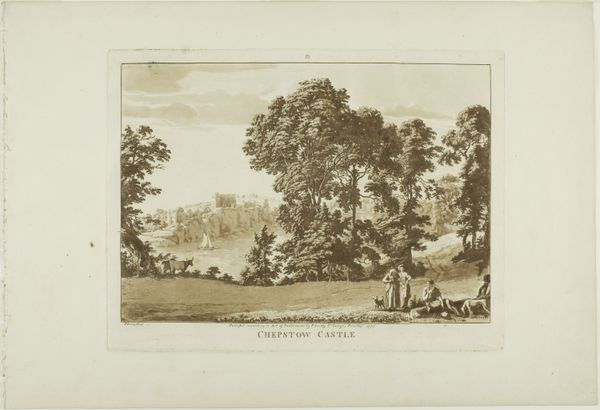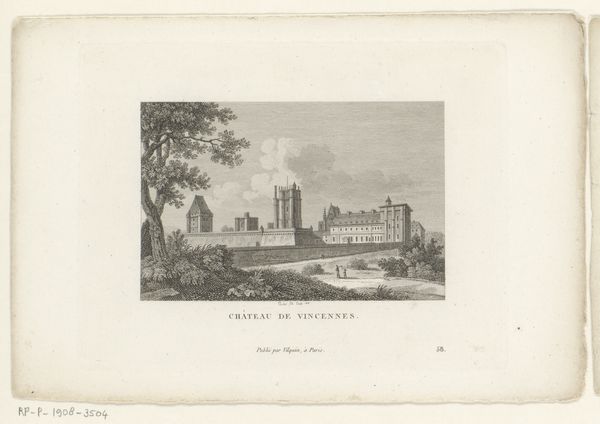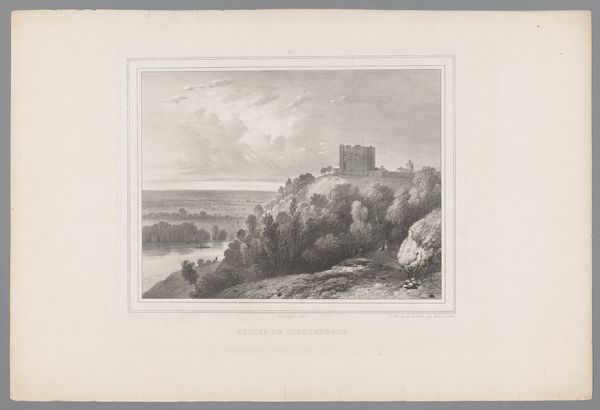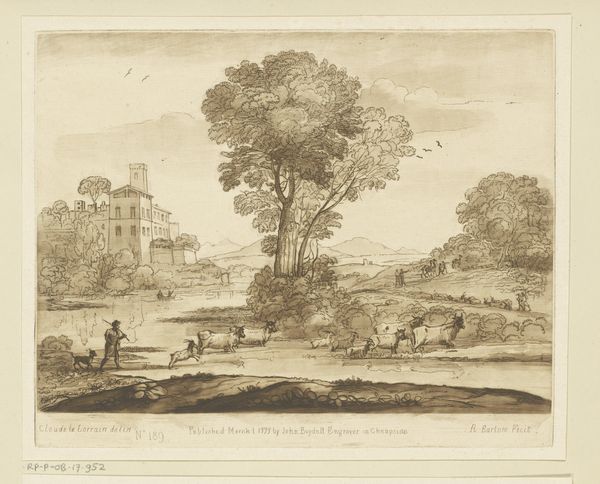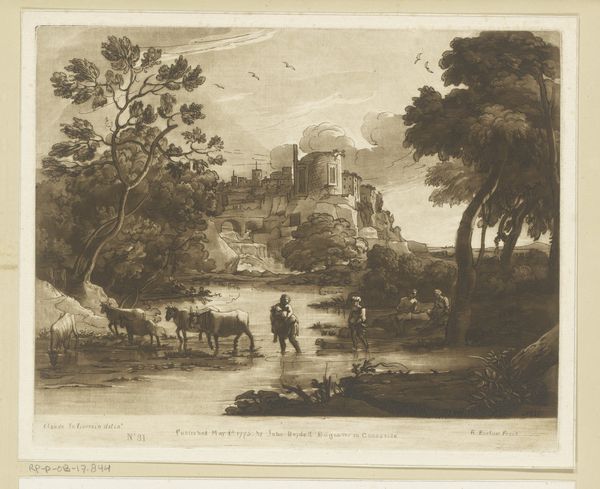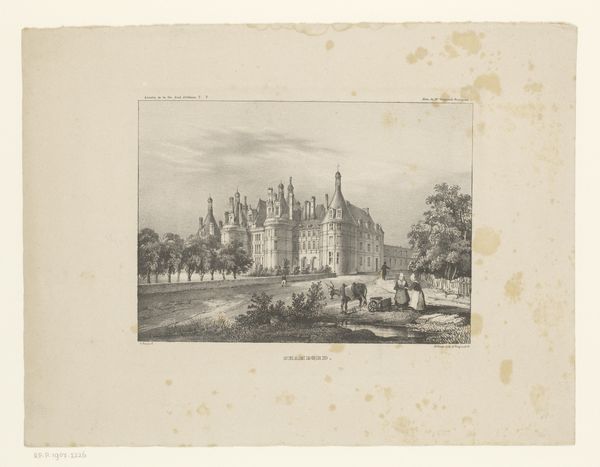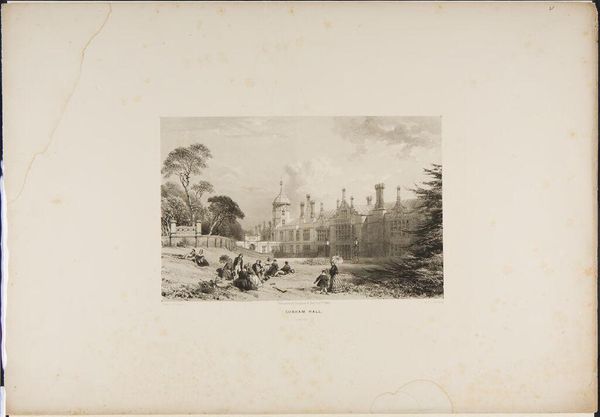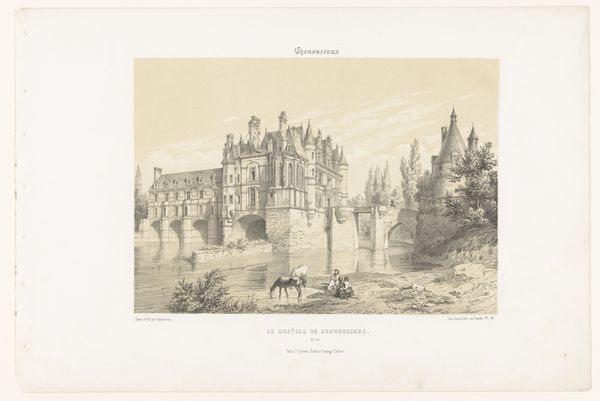
The Château of Count Woronzoff, Aloupka, Crimea, August 12, 1837 1840
0:00
0:00
drawing, lithograph, print, paper
#
drawing
#
lithograph
# print
#
landscape
#
paper
#
realism
Dimensions: 223 × 320 mm (image); 224 × 319 mm (primary support); 347 × 454 mm (secondary support)
Copyright: Public Domain
Curator: This is "The Château of Count Woronzoff, Aloupka, Crimea, August 12, 1837," a lithograph by Auguste Raffet, created around 1840. It's currently housed here at the Art Institute of Chicago. Editor: The overall mood is contemplative, even somber. The soft grays lend an air of distance to the landscape. Curator: Right, the medium of lithography allows for such nuanced gradations of tone. Note how Raffet captured this architectural marvel and its integration with the natural surroundings. The Woronzoff Palace itself is quite a fascinating example of early 19th-century architectural ambition – a symbol of imperial power and its expansion. Editor: Precisely! It is impossible to ignore the social context in which this image was produced, where class division played out dramatically, given the location within the contested landscape of Crimea and Russia’s imperial aspirations. The people in the foreground are particularly telling of power dynamics and labor. Curator: Absolutely. Raffet's technical mastery lies in how he uses the landscape to emphasize these power dynamics. See how the meticulous rendering of the palace contrasts with the slightly less detailed depiction of the locals in the foreground. Editor: And it prompts critical questions about spectatorship. Are we invited to admire the architectural achievement or to reflect on the social realities underpinning its existence? Consider that those workers are visually tethered to this land but politically estranged from the ownership implied by the grand castle, and what narratives of identity and control emerge. Curator: His process highlights the tension between idealized landscape and lived experience, revealing some of the implicit social structures of the time. The lithographic process itself became an essential element in shaping perceptions, allowing wider circulation. Editor: This image makes me wonder: how did colonialism shape notions of beauty and progress? And further, whose narratives are being amplified, and whose are being erased from view, particularly considering the perspectives and conditions of labor? Curator: Raffet, in this single sheet of paper, provides us with multiple points of engagement; examining both the material and the social impact reveals far more than just architectural documentation. Editor: It's an entry point for critical dialogues that continue resonating to this day. Thanks for bringing this complexity to our attention.
Comments
No comments
Be the first to comment and join the conversation on the ultimate creative platform.
